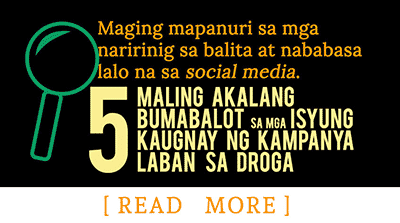The recent destruction brought about by Typhoon Yolanda in the Eastern Visayas not only revealed how vulnerable the Philippines to disasters, but it also presented the most disheartening fact that there was this obvious absence of government’s effective mechanism for response to this type and magnitude of disaster.
What happened in Tacloban where all the government’s line agencies were affected, hence, had no capacity to respond, service utilities were cut, and major thoroughfares were destroyed could happen anytime again and anywhere in the country as we face extreme and undeniable impact of climate change.
As number of studies including the recent Intergovernmental Panel on Climate Change (IPCC) report identified human-induced activities as the major contributor to climate change, increasing number and magnitude of weather disturbances is perceived to happen in the future.
Given this scenario, more Tacloban and Guiuan-like disaster may take place one after the other as we note that the Philippines is being visited by typhoons at an average of 19 typhoons per year.
Such chaos is unimaginable and incomprehensible.
The concept of DQRT
The Philippine Misereor Partnership Inc. (PMPI), with its huge network of partner organizations all over the country, recognized the need to prepare its members in responding to calamities with increasing magnitude.
The establishment of the “disaster quick response team (DQRT)” within the clusters is hoped to provide the members a mechanism of coordination in time of disasters.
The DQRT shall provide direction for the relief efforts.
It shall facilitate support and access to resources from the local government units (LGUs), the national government, and organizations within and outside the region.
Operationalizing DQRT
To operationalize the DQRT, it shall be composed of volunteers from partner organizations who are able and willing to share their expertise, time, and their lives even to rescue partners in need.
Team members will undergo extensive training on preparedness and response who will in turn train their partner communities for the same coordinated action.
The DQRT is expected to organize themselves into sub-teams that will focus of the following: preparedness, prevention, and mitigation; response; and rehabilitation and recovery [See Diagram 1 for the coordinating structure of DQRT].
The Secretariat, together with the members and experts of the Task Force on Climate Change and Disaster Risk Reduction will comprise the technical support for the cluster DQRT including linkages to national and international agencies for further support.
Among the responsibilities of the cluster DQRT are conducting damage and needs assessment after a major disaster, organizing the cluster for relief works, coordinating the efforts to the Secretariat [See Diagram 2 for the proposed process of coordination], reviewing proposal prepared by organizations with partner communities affected by disasters and preparing the endorsement for funding letter to the Secretariat, and assisting other cluster DQRTs affected by disaster in case it cannot function.

